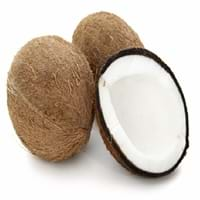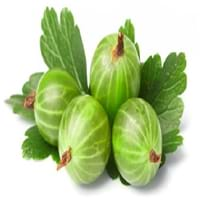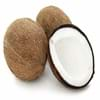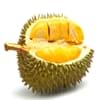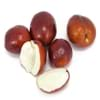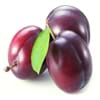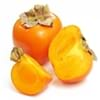Health Benefits
Acidity treatment, Acts as natural antibiotic, Anti-oxidant properties, Aphonia treatment
Arthritis prevention, Cancer prevention, Liver health, Scurvy treatment, Ulcer prevention
General Benefits
Anti-inflammatory properties, Body hydration, Boosts immune system, Controls blood sugar levels, Digestive aid, Fights against infections, Flu treatment, Healing of wounds, Helps in weight loss, Maintains healthy cholesterol level
Boosts immune system, Digestive aid, Eye care, Fights against infections, Improves blood circulation, Maintains healthy cholesterol level, Sore throat treatment, Treatment of common cold
Skin Benefits
Anti-aging benefits, Heals sunburn, Hydrates skin, Reduces wrinkles, Skin rejuvenation, Skin revitalization, Treatment of skin diseases
Anti-aging benefits, Brightens and lightens complexion, Reduces wrinkles, Treatment of acne
Hair Benefits
Promotes longer and healthier hair, Regulates hair growth, Rejuvenates scalp, Shiny hair, Treatment of dandruff
Prevents hair loss, Promotes longer and healthier hair, Treatment of dandruff
Allergy Symptoms
Abdominal pains, Breathing difficulty, Itching in tongue and other parts of mouth, Nasal congestion, Nausea, Runny nose, Vomiting
Constipation, Diarrhea, Drop in blood pressure, Eczema, Facial swelling, Hives, Hoarseness, Itching, Itchy eyes, Nausea, Red rash, Redness of eyes, Runny nose, Sore eyes, Swelling of mouth, tongue or lips, Tingling sensation in mouth, Vomiting
Side Effects
Allergic reaction, Indigestion, Weight gain
Gastric irritation
Best Time to Eat
Along with meal, Best if taken as a breakfast (or empty stomach), As a snack in the late afternoon, Morning time (before lunch)
Best if taken as a breakfast (or empty stomach), As a snack in the late afternoon, Don't consume at night and before bed, Morning time (before lunch)
Vitamin B5 (Pantothenic Acid)
Vitamin C (Ascorbic Acid)
Vitamin K (Phyllochinone)
Not Available
Lutein+Zeaxanthin
Not Available
Calories in Fresh Fruit with Peel
Not Available
Calories in Fresh Fruit without Peel
Not Available
Calories in Frozen Form
Not Available
Not Available
Calories in Dried Form
Not Available
Type
Tree fruit, Tropical
Berry, Tree fruit
Season
All seasons
Summer
Varieties
Tall Varieties- West Coast Tall, Laccadiv Micro, Andaman Ordinary, Fiji, Kappadam, San Ramon, Philippines, Spicate, and Pratap. Dwarf Varieties- Chowghat Orange Dwarf (COD) and Chowghat Green Dwarf (CGD)
Whinham's Industry, Green Hansa, Clark, Chataqua, Invicta, Keepsake, Lepaa Red, May Duke and Whitesmith
Color
Brown, Green
Green, Purple, Red, Yellow
Inside Color
White
Yellowish Green
Taste
Juicy, Sweetish
Astringent
Origin
America, India
Africa, Europe, South-West Asia
Soil Type
Clay, Sand
Loamy, Well-drained
Climatic Conditions
Hot, Humid
Dry, Warm
Facts about
- Burning coconut's husk helps repel mosquitoes.
- Surveys say that falling coconut kills hundreds every year.
- Coconut water is used as a substitute Blood Plasma & is called "father of modern tissue culture science".
- Traditionally, kids were told that babies were found under gooseberry bushes.
- They are also called 'fayberries' due to an ancient belief that fairies hid in gooseberry bushes to avoid danger.
Top Producer
Indonesia
Germany
Other Countries
Brazil, India, Philippines, Sri Lanka
Austria, Czech Republic, Denmark, Hungary, Lithuania, Poland, Russia, Ukraine, United Kingdom
Top Importer
United States of America
Not Available
Top Exporter
Philippines
Not Available
Botanical Name
Cocos nucifera
Ribes uva-crispa
Synonym
Not Available
Ribes grossularia
Subkingdom
Tracheobionta
Tracheobionta
Division
Magnoliophyta
Magnoliophyta
Class
Liliopsida
Magnoliopsida
Subclass
Arecidae
Dillenhidae
Order
Arecales
Saxifragales
Family
Arecaceae
Grossulariaceae
Species
C. nucifera
R. uva-crispa
Generic Group
Arecaceae
Saxifrage
Difference Between Coconut and Gooseberry
We might think that Coconut and Gooseberry are similar with respect to nutritional value and health benefits. But the nutrient content of both fruits is different. Coconut and Gooseberry Facts such as their taste, shape, color, and size are also distinct. The difference between Coconut and Gooseberry is explained here.
The amount of calories in 100 gm of fresh Coconut and Gooseberry with peel is Not Available and 44.00 kcal and the amount of calories without peel is 354.00 kcal and Not Available respectively. Thus, Coconut and Gooseberry belong to High Calorie Fruits and Low Calorie Fruits category.These fruits might or might not differ with respect to their scientific classification. The order of Coconut and Gooseberry is Arecales and Saxifragales respectively. Coconut belongs to Arecaceae family and Gooseberry belongs to Grossulariaceae family. Coconut belongs to Cocos genus of C. nucifera species and Gooseberry belongs to Ribes genus of R. uva-crispa species. Beings plants, both fruits belong to Plantae Kingdom.
